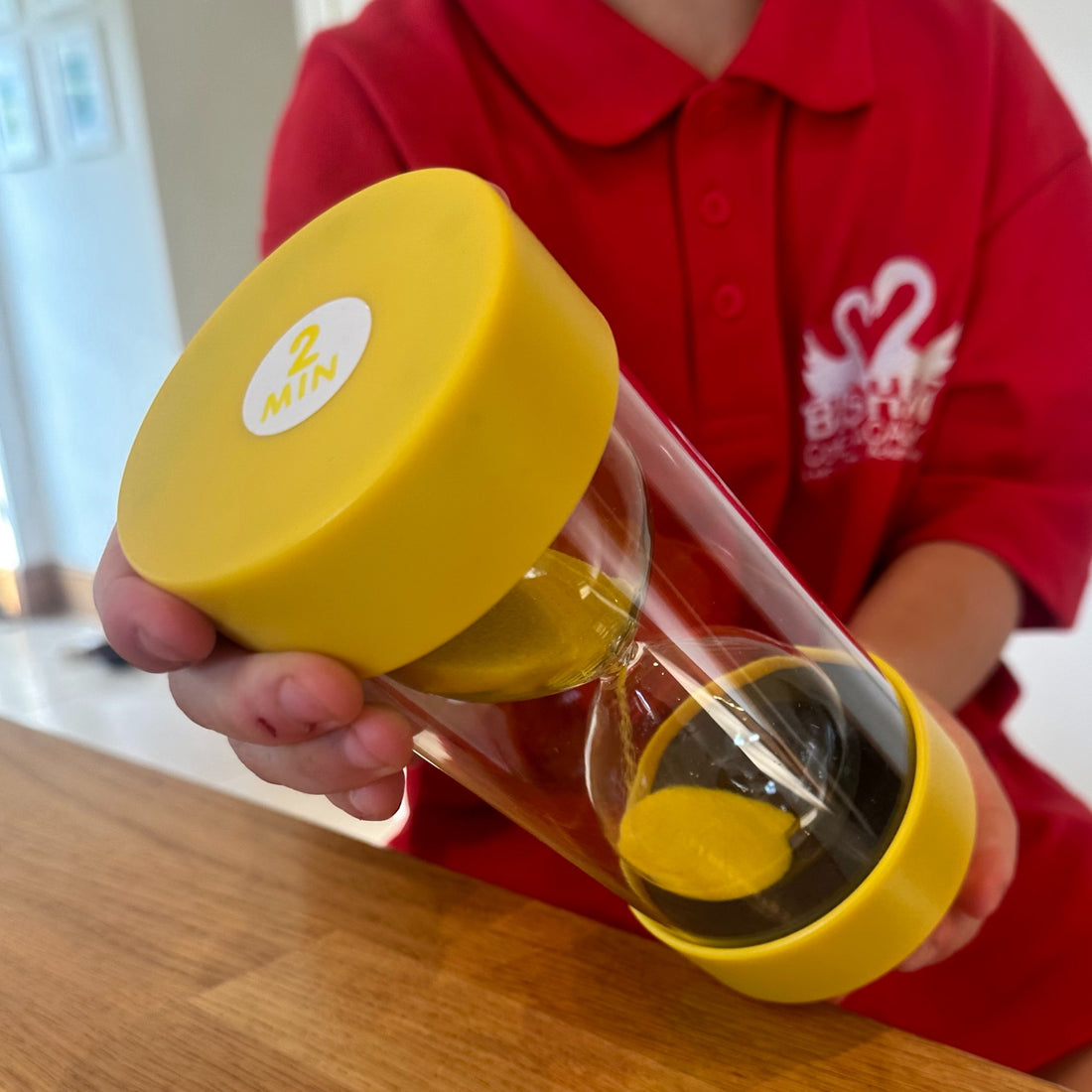In today’s dynamic classroom environment, finding tools that engage children and support their diverse learning needs is crucial. One such versatile and effective tool is the sand timer. Simple yet powerful, sand timers can enhance time management, focus, and independence among students. This guide explores how and why to incorporate sand timers into your teaching strategy, particularly for primary and SEN Teaching Assistants
Why Use Sand Timers?
1. Visual Time Management
Sand timers provide a clear visual representation of time passing, making it easier for students to understand and manage time. This is especially beneficial for young learners who may struggle with the abstract concept of time and for special needs students who need concrete visual cues.
2. Reducing Anxiety
Many students, especially those with special needs, can become anxious when faced with a task without a clear endpoint. Sand timers can alleviate this anxiety by giving them a clear, finite period to focus on a task, leading to a sense of accomplishment once the sand runs out.
3. Encouraging Independence
Sand timers can empower students to take control of their own time management. By setting a timer for a specific task, children learn to pace themselves and work independently, reducing their reliance on constant teacher guidance.
4. Enhancing Focus
The visual and finite nature of sand timers can help students concentrate on the task at hand. Knowing that they only need to focus for a set amount of time can make it easier for them to maintain attention and effort.
How to Use Sand Timers in the Classroom
1. Managing Task Duration
Use sand timers to limit or allocate time for specific activities. For instance, a five-minute timer can be used for quick writing exercises or a ten-minute timer for reading sessions. This helps students stay on task and transition smoothly between activities.
2. Break Times
Integrate sand timers during breaks to help students understand the duration of their free time. This is particularly useful for special needs students who may need structured intervals of rest to maintain focus throughout the day.
3. Turn-Taking and Sharing
Sand timers are excellent tools for activities that require turn-taking. During group activities or games, a timer can ensure that each student gets an equal amount of time to participate, fostering fairness and patience.
4. Behavioural Interventions
For children who need support with behaviour management, sand timers can be used to reinforce positive behaviour. For example, you can set a timer for appropriate behaviour, and once the time is up, reward the student if they have met the behavioural expectations.
5. Transitioning Between Activities
Transitions can be challenging, especially for special needs students. Using a sand timer to signal the end of one activity and the start of another can make transitions smoother and less stressful.
Practical Tips for Using Sand Timers
1. Start Small
Introduce sand timers gradually. Start with short durations and slowly increase the time as students become more comfortable and proficient with managing their tasks.
2. Combine with Verbal Cues
Use sand timers alongside verbal cues to reinforce instructions. For example, “You have until the sand runs out to finish your drawing.”
3. Create a Timer Station
Designate a specific area in the classroom for sand timers. This makes them easily accessible and helps students associate the area with time management.
4. Use Multiple Timers
Having timers of varying durations can cater to different activities and student needs. A mix of one-minute, five-minute, and ten-minute timers can cover most classroom scenarios.
5. Encourage Self-Regulation
Teach the children to set the timers themselves. This promotes self-regulation and responsibility, as they learn to manage their own time without constant teacher intervention.
Conclusion
Sand timers are a simple yet powerful tool that can significantly enhance classroom management and student learning. They are especially beneficial in primary and special needs classrooms, where visual aids and structured time management are essential. By incorporating sand timers into your teaching strategy, you can create a more organised, focused, and independent learning environment. Give sand timers a try and observe the positive impact they can have on your classes’ engagement and productivity

